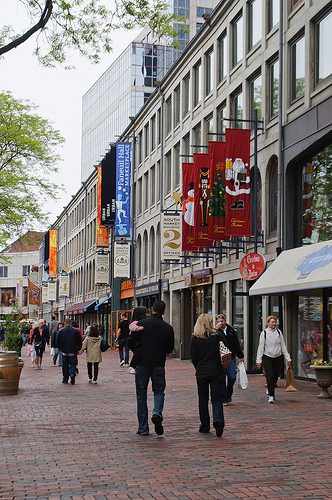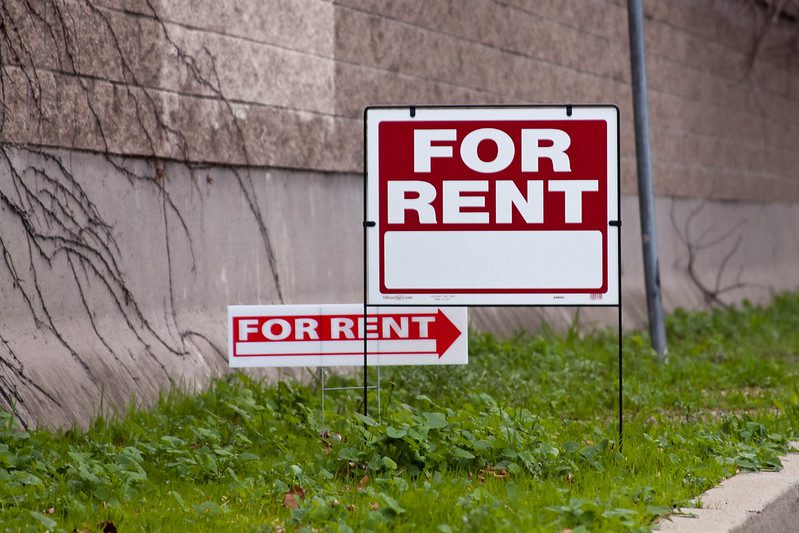
But apparently, when they weigh in, it is with force and insight.
Rachel Godsil, writing in the latest issue of Poverty & Race Research Action Council's newsletter, lays out a compelling case for federal intervention to prevent displacement in gentrifying neighborhoods, and a concete proposal for how to do it.
It blew me away.
Godsil's rationale for intervention is pretty straightforward. After recounting the familiar (I hope) set of governmental policies that devastated most neighborhoods now being gentrified and prevented the people of color living in them from escaping themselves, she sums up:
The central role of government in creating the deteriorating conditions that now lend themselves to gentrification and reduced autonomy for in-place residents suggests that it is appropriate for the government to now play a role in addressing gentrification and enhancing such autonomy.
It other words, you broke it, and people suffered. The least you can do is prevent them from suffering again, and give them a chance to benefit from the opportunities and amenities will come with the neighborhood's return. After all, they not only stuck it out through the bad years, they probably laid a lot of the groundwork for its preservation and revival.
And if you need a statutory excuse rather than a moral one, Godsil notes that that's where the affirmatively furthering fair housing rule comes in. After all, temporary integration which then turns out to be wholesale displacement of one population by another does not in the end count as having increased integration.
So What to Do?
The best part is Godsil has a plan. I'm sure the details could be, and should be, subject to much discussion, but it's one of the most concrete things I've heard and that's a great place to start.
She suggests:
- When a certain price increase trigger (for example, 25 percent rent rises within 2 years) is hit in a neighborhood that experienced these government-driven price and population losses,
- renters who have lived there more than a certain number of years (or their grown children who would have inherited the home if it had been owned)
- are given vouchers for a certain number of years that cover the price difference, enabling them to stay in place (or move somewhere else if they want) or a low-cost, minimal downpayment loan to purchase their home.
Pretty simple, eh?
Even better, I can envision such a program being a real bridge, a real common cause, between the fair housing community and the community groups working in these neighborhoods.
Like I said, there's a lot more conversation to be had. I'd want to get into property tax circuit breakers for existing homeowners on a fixed income, support for small businesses facing massive rent increases, and the idea that the vouchers would expire in five years (it's not like it's going to be cheaper again in five years). Could permanently affordable housing models play a role here? Preference for longtime residents in required inclusionary units?
But the important thing is that this gives us something proactive to have a conversation about.
Of course one of the hardest things to do about gentrification is address it before it's too late, so getting this out there while the implementation of the affirmatively furthering fair housing rule is still being formed seems pretty important.
What do you think?
——-
As a side note, I would dispute Godsil's assertion that there is no role for zoning or regulatory measures in responding to the cultural displacement aspect of gentrification. Though I agree that you can't and shouldn't freeze the culture of neighborhoods in time, you can balance the power a little. Rural areas have figured out how to use right-to-farm laws to fight back against new wealthy residents who move next to a farm and then complain about the smell of manure. It strikes me that in a neighborhood with, for example, an existing mix of residential and light industrial that provides jobs, or very strong cultural traditions that new residents object to on aesthetic grounds (noisy public holiday celebrations, for example), that there could be a role for similar types of protective legislation. (See for example, San Francisco's Japantown Special Use District, though that's more focused on architectural styles.)
(Photo by InSapphoWeTrust CC BY-SA)





I think, like virtually any proposal for such a difficult problem there would be challenges with this, but I appreciate the discussion. One idea I had a while back was to offer long-term leases so that residents could lock in their rents – this would put some of the responsibility on the backs of renters, rather than the current system where they enjoy all the freedom of renting and often expect none of the drawbacks (in particular, lack of price certainty). That’d have problems too, but I think the solution will ultimately be multi-pronged. https://www.betterinstitutions.com/2013/07/can-longer-leases-protect-us-from.html
We agree that Rachel Godsil’s article is on the mark. But the swipe at the fair housing community in unjustified. Anyone who hasn’t heard fair housing advocates addressing issues of gentrification and forced displacement hasn’t really been listening.
One could argue, on the other hand, that the affordable housing and community development industries have been too focused on gentrification. Why too focused? Because gentrification is a problem in a subset of cities with hot markets, while in other cities distress and abandonment are the bigger problems by far. The industry is not very focused on meeting the needs/demand among people —- especially families with children —- who for very good reasons want to leave distressed neighborhoods.
Barbara, I should probably have said that I have experienced fair housing conversations that have tended to assume that suburbs are the locations of opportunity rather than urban communities experiencing reinvestment. I have not met a fair housing advocate who doesn’t recognize the issue, but I have been paying attention, and from my understanding of the trends of movement back to previously distressed urban areas, I have found the issue to be underrepresented. It’s not just hot market region issue—downtown Detroit has waiting lists for its new luxury apartment buildings, and midtown Detroit is experiencing an upsurge—allowing people the right to remain there, or move to those areas, is absolutely a fair housing concern, even (or especially) while the surrounding city neighborhoods are still suffering.
That said, I think your critique of the community development world could also be a fair one. It’s one Alan Mallach has made before. There are no either/ors. We have to address all three angles on the problem—right to move, right to stay, and improvement of the places that are not serving people.
Shane, That’s definitely an intriguing addition to the mix! I’d love to hear other people’s thoughts on it.
Further on the idea of long-term leases, perhaps that approach could happen by means of tax breaks for the landlords who have the long-term leases. This could help them see the lease as a plus, not an unfunded mandate that might lead to animus against the tenants.
Does anyone remember rent control? Since the 1970s rent control has been adopted in the USA almost exclusively by “hot market” localities. It’s been a response to gentrification pressures–made politically possible because it brings out a common interest of lower- and middle-income residents. Instead of those middle-income people becoming instruments of gentrification they become (some of them anyway) allies to stop it or at least slow it down. By holding down market values it also helps nonprofits and housing authorities to secure more affordable/subsidized housing. At least that’s how it worked here in Massachusetts until it was wiped off the books 1995. For anyone who wants a detailed account of the career of rent control in Cambridge Mass. and its relationship to other political and housing issues, I will be happy to email mine to anyone who asks.